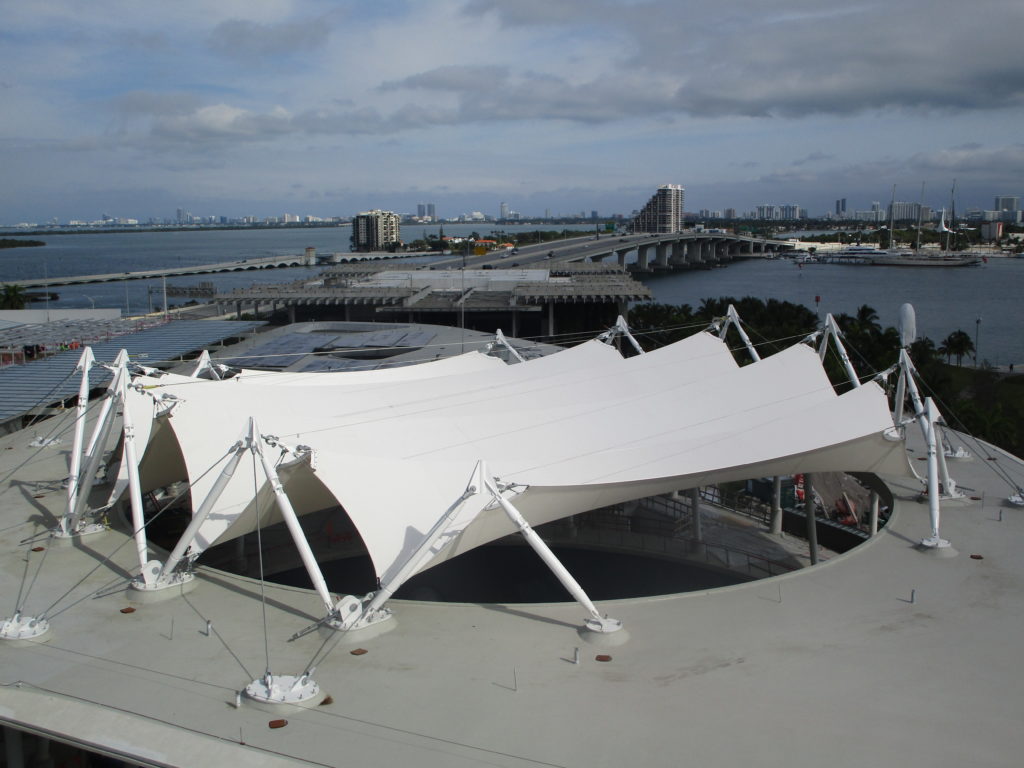By Bruce N. Wright, AIA

As marine museums go, the Phillip and Patricia Frost Museum of Science goes the extra nautical mile to fully engage visitors with its message of sustainable ecology. Designed by the acclaimed British design firm Grimshaw Architects, the Frost Museum is a complex of four buildings located within view of the ocean in Miami, Fla. An open-air courtyard visually connects the outer world with the science exhibits within. A major element of the interactive spaces in the museum is the 500,000-gallon Gulf Stream Aquarium, an organic shape that the architects describe as “a water droplet from above and not unlike the prow of a ship when approached from the ground” level.
Positioned over the aquarium is a 7,350-square-foot tensile membrane structure, which is a mix of frame-supported and cable-supported systems, to shield the tank and spectators from direct sun. The shapes of each building surrounding the aquarium and the fabric structure itself are sculpted to take advantage of ocean breezes and the sun, without overtaxing the microclimate at grade level. A series of ridge and valley fabric segments are lifted up from the building cornice line by paired steel masts (two canted together to make a triangle, peak up) at the high endpoints of each segment, with tie-downs at the valley low points for stability.
This project was an Outstanding Achievement winner in IFAI’s 2018 International Achievement Awards competition.
PROJECT DETAILS
Architect:Grimshaw Architects
Engineering/fabrication/installation:FabriTec Structures LLC
Fabric: Sheerfill® II PTFE from Saint-Gobain, Performance Plastics
Bruce N. Wright, AIA, is an architect, teacher, consultant to architects and designers and a frequent contributor to Specialty Fabrics Review, Fabric Architectureand Advanced Textiles Source.
 TEXTILES.ORG
TEXTILES.ORG


